Few visitors take the time to appreciate the remarkable collection of historic structures and features that are found throughout the massive grounds of Cedar Point. While many parks erect modern buildings that mimic historic structures in their design, Cedar Point has maintained many of its most distinguished structures and integrated them into the everyday life of this vibrant amusement park. These beautiful buildings, often standing side-by-side with the most modern and high-tech thrill attractions found anywhere on Earth, are a testament to the quality of the workmanship of their builders and the appreciation that Cedar Point has for its long and distinguished history.

The Grand Pavilion, now the heart of the Cedar Point Convention Center, was constructed in 1888. It was the center of social activities at Cedar Point and contained an auditorium, bowling allies and dining facilities, and was surrounded by open porches and balconies to catch the cool, pleasant breezes off Lake Erie.
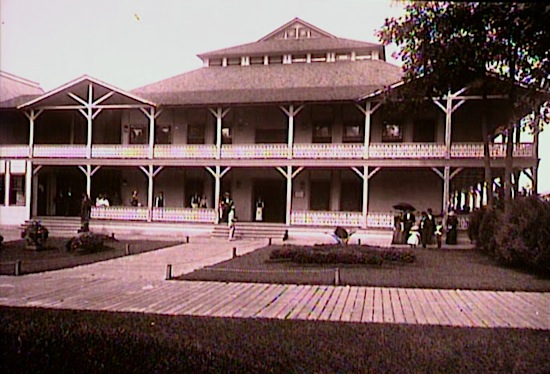
This building is probably the least recognizable historic structure in the park, due to its being surrounded by later additions which replaced its balconies and porches. However, if they know what to look for, visitors can identify the distinctive roofline of the original structure rising above the later additions, still standing on its original location near the beautiful sandy beach that was the start of the Cedar Point Resort.
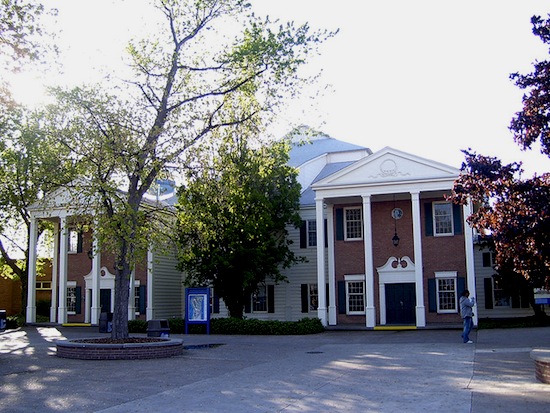
In contrast to the hard-to-identify Grand Pavilion, the Coliseum is by far the most distinctive and well-known structure at Cedar Point. It has stood in the center of the park since 1906, its 14 pointed towers and two domes topped with matching cupolas anchoring the Cedar Point Midway.

Over the 100-plus years it has stood here, the Coliseum has housed restaurants, beer gardens, a skating rink and since the 1960's one of the largest collection of pinball and video games to be found in any amusement park in the world.
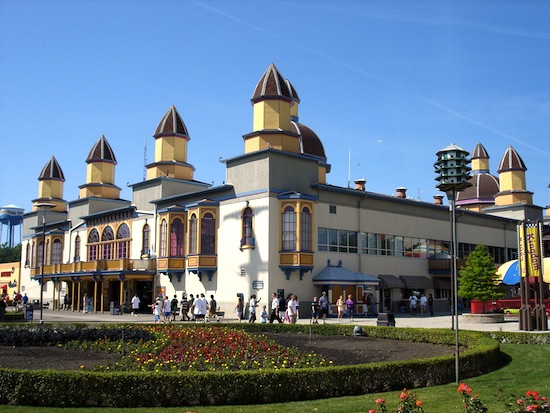
On the second floor of the Coliseum is a little-known gem of historic architecture, the Cedar Point Grand Ballroom. In the early years of Cedar Point, dances were a major source of enjoyment for the thousands of visitors that came to the park daily. The Ballroom was one of the largest in the Midwest, and in 1939 was redecorated as one of the finest examples of Art Deco design still in existence.
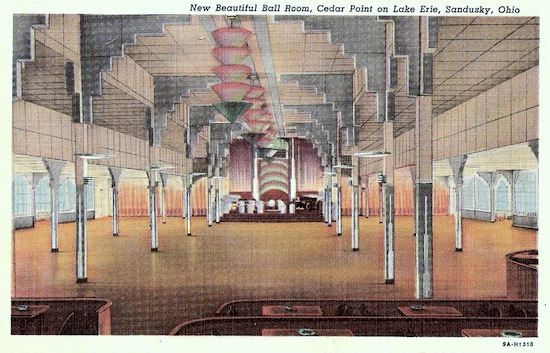
When I first visited Cedar Point in the mid '60s (OK, I'm showing my age), I thought that the Pagoda Gift Shop was part of the show building for the San Francisco Earthquake dark ride. A Chinese pagoda seemed appropriate as part of the San Francisco/Chinatown design of the ride. Little did I know that this beautiful colorful little piece of China in the middle of an American amusement park was actually one of the oldest structures in the park. It was constructed sometime between 1907 and 1914, and stood near the Coliseum but in a different location than its present site on the Midway. Before its present use as a gift shop, the Pagoda housed a variety of services such as the Cedar Point Post Office and a restroom.
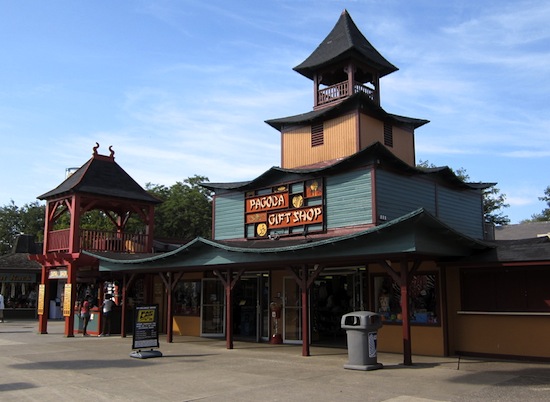
Behind the current location of the Pagoda Gift Shop, next to the Coliseum and surrounded by beautiful trees and flower beds, stands the old Administration Building, the headquarters for Cedar Fair until the new administration building was erected next to it a few years ago. When built in the early 1900's, this two-story wooden structure housed not only the offices for Cedar Point but also an apartment for George Boeckling, the man who converted Cedar Point from a quiet day resort with a beautiful beach into a nationally-renowned summer resort where thousands of people from throughout the Midwest came to relax, enjoy the rapidly-growing number of rides and attractions on the Amusement Circle, and drink and dance the summer nights away.
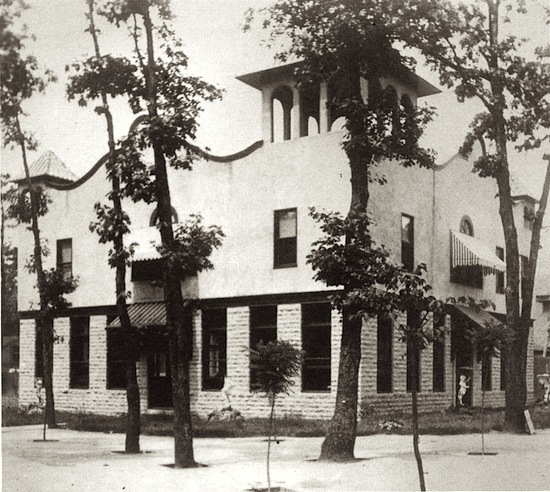
Rather than demolish this historic but unused building, which sits on a prime piece of valuable real estate in the center of the Midway, Cedar Point decided to convert it into the Eerie Estate, a walk-through haunted mansion and one of the most popular features of HalloWeekends. Thousands of dollars worth of antiques were acquired to recreate the mansion of the late George Boeckling, whose ghost and those of his servants still haunt this structure. Here, too, is found Boeckling's Banquet, where guests can enjoy a wonderful gourmet meal in Mr. Boeckling's dining room while being waited on by his zombie servants.
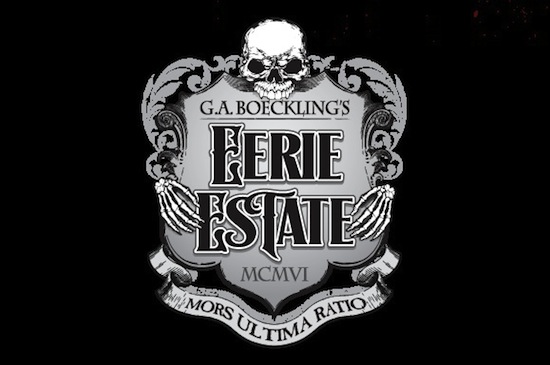
The Breakers Hotel was not the first hotel built at Cedar Point. That honor goes to the Bay Shore Hotel (1899), a tiny facility soon followed by the fifty-five room White House (1901), which was eventually absorbed by the larger Cedars Hotel (1915), a 270-room hotel which still stands near the Marina and is used as employee housing. None of these facilities, charming and cozy as they were, could compare with the size, beautiful location or comfort of the magnificent structure erected by Mr. Boeckling in 1905 on the Cedar Point Beach.
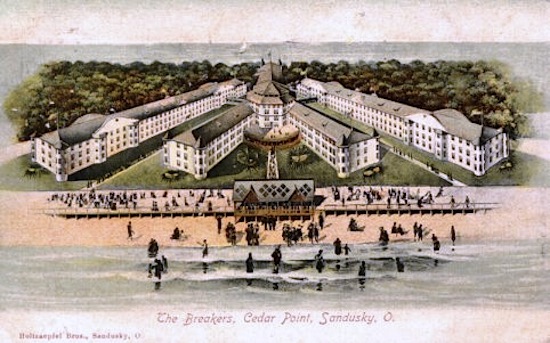
The original design of the Breakers Hotel contained more than 600 rooms, most of which had lake views, spread over eight acres. The center of the hotel was the Rotunda, a five-story hollow tower lined with balconies that still stands as one of the most beautiful spaces in Cedar Point.

One side of the Rotunda led to the beach, while the other led past elegant meeting rooms and reception rooms to the main lobby. This two-story space, still graced with a grand staircase leading to a surrounding balcony, was hung with chandeliers and decorated with stained glass windows from the New York studios of Louis C. Tiffany. Wicker furniture from Austria, brass beds and oak dressers, and running water in every room -- a rarity in summer hotels of the era -- made a stay at the Breakers worth every penny of the two dollars that an average room cost per night.
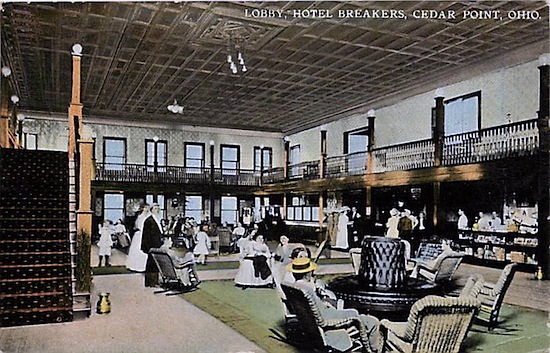
The Breakers has seen many changes in the years since it first welcomed guests to Cedar Point. Many of its original wings have been torn down and replaced with more modern hotel rooms. The Tiffany stained-glass windows in the lobby are gone, and the Chinese Writing Room is now a shop selling fine clothing. But the magnificent Rotunda still rises five stories high, with finely-polished wood floors and white wicker furnishings; the spacious lobby still has its grand staircase and surrounding balcony and is still lined with excellent restaurants; most importantly, the Breakers still stands on the beach at Cedar Point as one of the finest and few remaining resort hotels on the Great Lakes, a valuable reminder of this part of American history that led, via many circuitous routes, to the great entertainment, amusement and theme resorts that now can be found throughout this country.
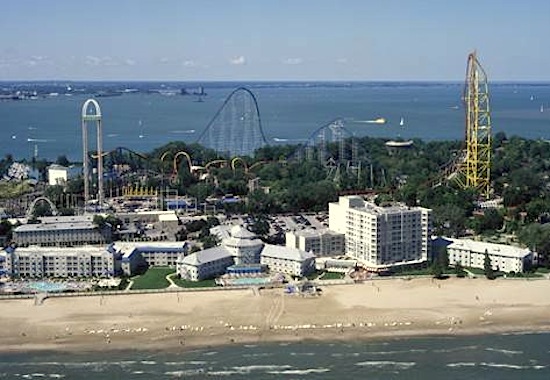
The oldest structure at Cedar Point is probably the least known among the general public, the Cedar Point Lighthouse. There has been a lighthouse on this location, at the tip of Cedar Point, since 1839, but the sometimes savage winter storms that hit the area caused the original wooden structure to require constant repair, and in 1882 the current stone building was erected to help guide ships into the safe harbor of Sandusky Bay.
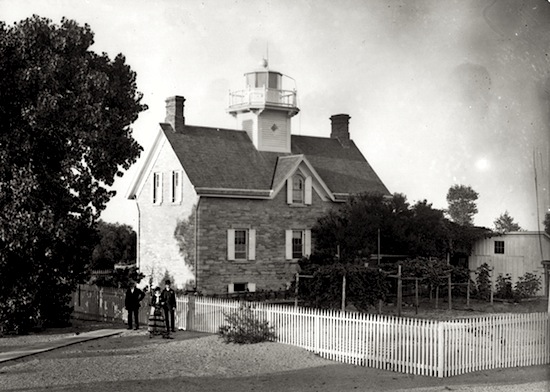
Rather than demolishing this solidly-built and historically-significant structure, which is listed on the National Register of Historic Places, Cedar Point decided to restore this unique building and use it as the centerpiece of Lighthouse Point, a collection of cottages and cabins inspired by lakeside villages of the 1800's.
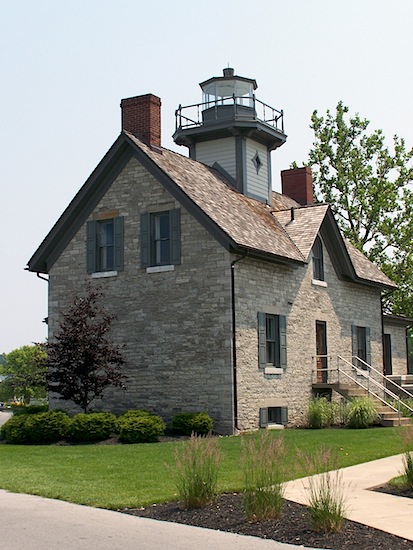
These structures are surrounded by many other historic structures and decorations brought to Cedar Point over the past 100-plus years of its existence: Log cabins from early in Ohio's history line Frontier Trail; elegant metal statuary from the 1904 Louisiana Purchase Exposition in St. Louis grace many of the magnificent floral beds found throughout the park; historic rides such as the 1912 Midway Carousel and the 1920 Cedar Downs, one of only two racing carousels in America. The Town Hall Museum in Frontier Town is loaded with memorabilia from Cedar Point's past, including models of now-gone attractions, photos of Cedar Point over the last 100 years, and even a complete antique pharmacy.
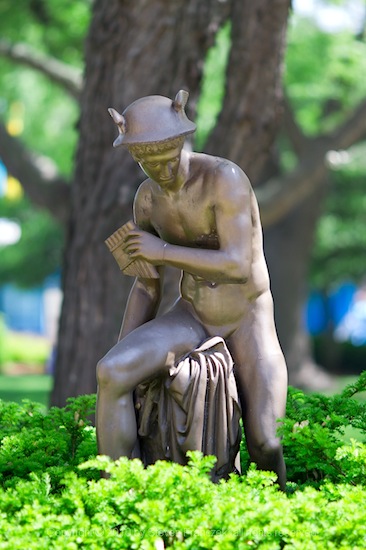
Cedar Point. It is not just an amusement park. It is not just a thrill park. It is a valuable link to the very beginning of the theme park world that we all love, a historic treasure to explore and experience.
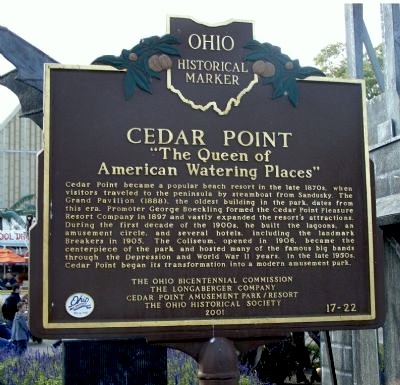
Great stuff, James, thank you for sharing.
(And yes, Robert, I can see all the photos).
Side note, in my post on the forum someone accused me of being Rob Pastor. I was born in 1977 so unless I am some sort of mega Dougie Houser where I was married at the age of two, worked a full time job, and went on coasters .....this is not possible.
Katie
Yeah, except I think they are still using the original beds. Worst beds ever.
This article has been archived and is no longer accepting comments.